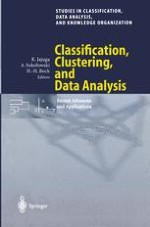The present volume contains a selection of papers presented at the Eighth Conference of the International Federation of Classification Societies (IFCS) which was held in Cracow, Poland, July 16-19, 2002. All originally submitted papers were subject to a reviewing process by two independent referees, a procedure which resulted in the selection of the 53 articles presented in this volume. These articles relate to theoretical investigations as well as to practical applications and cover a wide range of topics in the broad domain of classifi cation, data analysis and related methods. If we try to classify the wealth of problems, methods and approaches into some representative (partially over lapping) groups, we find in particular the following areas: • Clustering • Cluster validation • Discrimination • Multivariate data analysis • Statistical methods • Symbolic data analysis • Consensus trees and phylogeny • Regression trees • Neural networks and genetic algorithms • Applications in economics, medicine, biology, and psychology. Given the international orientation of IFCS conferences and the leading role of IFCS in the scientific world of classification, clustering and data anal ysis, this volume collects a representative selection of current research and modern applications in this field and serves as an up-to-date information source for statisticians, data analysts, data mining specialists and computer scientists.
